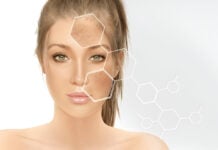In the age of smartphones and instant answers, AI-powered dermatology apps promise users a quick diagnosis with the snap of a photo. These apps use algorithms trained on thousands of skin images to identify conditions ranging from acne and eczema to melanoma. While the convenience is appealing, the growing reliance on these tools raises serious concerns about AI misdiagnosis in dermatology apps and the potential risks of self-diagnosing skin conditions without professional guidance.
The Rise of AI in Dermatology
Artificial intelligence has made impressive strides in dermatology, especially in image recognition. Some AI systems reportedly match or exceed the diagnostic accuracy of dermatologists in identifying skin cancers in clinical studies (Esteva et al., 2017). As a result, numerous apps now allow users to scan their skin lesions, rashes, or moles and receive instant feedback on possible conditions.
The goal is noble: to improve access to dermatologic care, particularly in underserved or remote areas. However, accuracy, context, and safety remain significant challenges.
How AI Dermatology Apps Work
Most dermatology apps use machine learning algorithms that are trained on large datasets of annotated skin images. Some use convolutional neural networks (CNNs), which excel in image classification. These apps ask users to take a picture of a lesion or rash, and the AI then compares the image to its database to offer a list of possible diagnoses, often ranked by likelihood.
Some apps go a step further by suggesting treatments or recommending whether users should consult a doctor.
The Problem: Misdiagnosis and Overconfidence
While the technology is promising, real-world performance often falls short. A major issue is that AI apps may misinterpret skin conditions due to variations in:
- Lighting and image quality
- Skin tone and texture
- Lesion size, shape, and location
- Contextual factors like symptoms or history, which the AI often lacks
A 2021 study published in The Lancet Digital Health evaluated the diagnostic accuracy of popular dermatology apps and found that nearly half misclassified high-risk skin lesions, with some wrongly identifying melanomas as benign conditions (Tschandl et al., 2021).
This can lead to two dangerous outcomes:
-
False reassurance: Serious conditions like skin cancer may be dismissed as harmless, delaying treatment.
-
False alarms: Benign issues like eczema may be flagged as cancer, causing unnecessary anxiety and overuse of healthcare resources.
Limitations in Skin Tone Representation
Another significant flaw in current AI dermatology models is racial bias. Many training datasets consist predominantly of images of lighter skin tones, leading to reduced diagnostic accuracy for people with darker skin. This underrepresentation can result in missed diagnoses or incorrect suggestions in Black, Hispanic, or South Asian populations (Adamson & Smith, 2018).
Until datasets are diversified and inclusive, AI tools risk reinforcing existing disparities in dermatologic care.
The Danger of Skipping the Doctor
The biggest concern with AI misdiagnosis in dermatology apps is the growing trend of self-diagnosis and self-treatment. Users may feel empowered to skip a professional consult if an app labels their rash as “mild eczema” or their mole as “low risk.” However, only a trained dermatologist can:
- Perform a full-body exam
- Take a proper history
- Conduct biopsies or dermatoscopic evaluations
- Differentiate between lookalike conditions
Some dangerous diseases, like amelanotic melanoma or cutaneous lymphoma, can appear deceptively benign and would likely escape algorithmic detection.
Real-Life Consequences
In 2022, a 34-year-old woman in the UK trusted a dermatology app that categorized her changing mole as “nothing to worry about.” Months later, after the lesion grew and darkened, she sought medical care and was diagnosed with Stage II melanoma. Though treated successfully, she shared her story as a cautionary tale about overreliance on technology and the importance of seeing a doctor.
The Role of AI: Assist, Not Replace
AI has a place in modern dermatology, especially as a triage tool to prioritize appointments or flag suspicious lesions for further review. In clinical settings, AI can assist dermatologists by increasing efficiency and accuracy.
However, for consumer-facing apps, there must be clear disclaimers and safeguards. Developers and regulators must ensure that:
- AI tools do not provide definitive diagnoses
- Users are encouraged to seek medical evaluation
- Apps are validated against diverse skin types and real-world images
- Results are presented with risk stratification and uncertainty indicators
AI in dermatology holds promise, but the current wave of consumer apps may do more harm than good if used improperly. The risk of AI misdiagnosis in dermatology apps highlights the importance of human expertise, particularly in complex or high-stakes conditions like skin cancer.
While technology can augment care, it cannot replace the trained eye, judgment, and clinical experience of a dermatologist. For now, the safest approach is to treat these apps as informational tools, not diagnostic authorities. When it comes to your skin, seeing a professional is still the gold standard.
References
- Adamson, A. S., & Smith, A. (2018). Machine learning and health care disparities in dermatology. JAMA Dermatology, 154(11), 1247–1248. https://doi.org/10.1001/jamadermatol.2018.2348
- Esteva, A., Kuprel, B., Novoa, R. A., Ko, J., Swetter, S. M., Blau, H. M., & Thrun, S. (2017). Dermatologist-level classification of skin cancer with deep neural networks. Nature, 542(7639), 115–118. https://doi.org/10.1038/nature21056
- Tschandl, P., Rinner, C., Apalla, Z., Argenziano, G., Codella, N., Halpern, A., … & Kittler, H. (2021). Human–computer collaboration for skin cancer recognition. The Lancet Digital Health, 3(7), e406–e417. https://doi.org/10.1016/S2589-7500(21)00070-X












